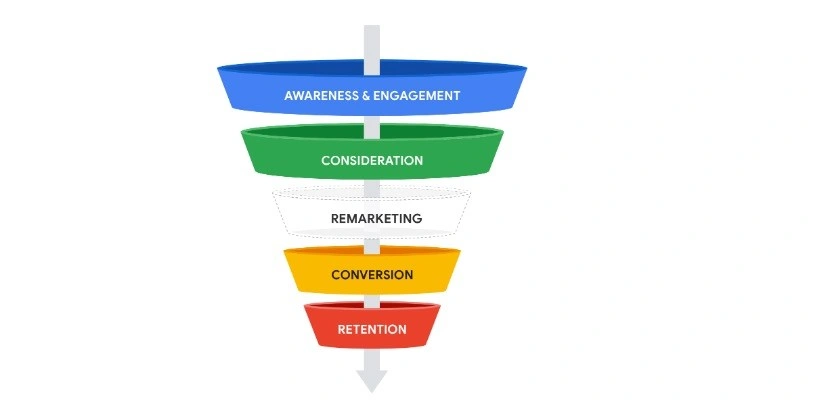Why Your CPA is More Important Than Your Traffic

A business can drive millions of website visitors, generate thousands of leads, and still be losing money. The reason is simple: it costs more to acquire a new customer than that customer is worth. Your Customer Acquisition Cost (CAC), or CPA, is the single most important metric for measuring the financial health of your marketing and sales efforts. It is a direct link between your spending and your profitability, a cold, hard number that tells you whether your growth engine is efficient or a drain on your business. Mastering your CPA is the ultimate key to building a profitable, sustainable business.
This article will break down what Customer Acquisition Cost is, why it is a more important metric than any other, and provide a comprehensive, strategic blueprint for reducing it. We will explore how to stop focusing on vanity metrics and start building a marketing machine that drives a predictable, profitable stream of new customers.
Is your growth strategy failing to capture attention? Contact Appear Online today for a free website audit to identify your opportunities and discover how to start driving more high-quality leads.
What is Customer Acquisition Cost (CPA)?
Customer Acquisition Cost (CAC or CPA) is the total cost of acquiring a new customer, including all marketing and sales expenses.
The Formula:
CPA = (Total Marketing and Sales Spend) / (Number of New Customers Acquired)
For example, if you spend £10,000 on a marketing campaign and it results in 50 new customers, your CPA is £200.
CPA is often confused with other marketing metrics, but it is fundamentally different.
- Cost Per Click (CPC): The cost of a single click on your ad.
- Cost Per Lead (CPL): The cost of generating a single lead.
- Cost Per Acquisition (CPA): This is the ultimate metric. It is the total cost of acquiring a paying customer. It includes all the costs that come before it, such as clicks, leads, and sales efforts.
.webp)
Why CPA is the Ultimate Metric
While other metrics are valuable for tactical analysis, CPA is the single most important number for measuring the financial health of your business.
- It Provides a Direct Line to Profitability: Your profitability is a direct function of your CPA and your revenue per customer. If your CPA is higher than your customer lifetime value, your business is not sustainable.
- It Guides Your Budget Allocation: By analysing your CPA by channel, campaign, and even keyword, you can make smarter decisions about where to spend your marketing budget. You can cut the channels with a high CPA and double down on the channels that are most profitable.
- It's a Measure of Your Efficiency: A low CPA is a direct signal that your business is highly efficient at converting leads into customers. It's a key indicator of a strong brand, a compelling value proposition, and a well-optimised marketing funnel.
- It's a Universal Metric: CPA is a universal metric that can be used to compare the performance of different marketing channels, from SEO and paid advertising to content marketing and social media. This allows you to make data-driven decisions about where to invest your resources.
The Factors That Influence CPA
To reduce your CPA, you must first understand the factors that influence it.
- Marketing and Sales Spend: The total amount of money you are spending to acquire a customer. This includes all advertising costs, salaries for your marketing team, and the costs of your marketing software.
- Conversion Rate: Your conversion rate is a direct driver of your CPA. A low conversion rate on a landing page, for example, will cause your CPA to skyrocket.
- The Customer Journey: A long, complex customer journey with multiple touchpoints will often have a higher CPA than a simple, short journey.
- Market Competition: Competition for keywords and ad space can dramatically increase your CPA. In a competitive market, you will often have to pay a premium to acquire a customer.
.webp)
A Strategic Blueprint for Reducing Your CPA
Reducing your CPA is not a single, one-time fix. It is a strategic, ongoing process that requires a holistic approach to your marketing and sales efforts.
Step 1: The Diagnostic
Before you can reduce your CPA, you must understand your current numbers.
- Calculate Your Current CPA: Calculate your CPA for each marketing channel and campaign. This will provide you with a clear baseline and help you identify the channels that are most and least profitable.
- Break Down the Funnel: Analyse your conversion rates at every stage of the funnel. Is your CPA high because your website has a low conversion rate? Or is it because your paid advertising campaigns are not driving a high volume of leads?
Step 2: Optimise Your Conversion Funnel
Improving your conversion funnel is the fastest way to reduce your CPA.
- Optimise Your Landing Pages: Your landing pages are your most important asset for reducing CPA. They should be fast-loading, mobile-friendly, and have a clear, compelling call to action.
- A/B Test Everything: Continuously A/B test your landing pages, headlines, and calls to action. A small improvement in your conversion rate can have a dramatic impact on your CPA.
- Streamline the Checkout Process: A long, complicated checkout process will lead to a high number of cart abandonments. Make the process as simple and frictionless as possible.
Step 3: The Role of SEO
SEO is a long-term strategy, but it is one of the most powerful tools for reducing your CPA.
- Organic Traffic is Free: Unlike paid ads, where you are paying for every click, a top organic ranking for a high-intent keyword provides you with a source of free, passive traffic.
- Higher Conversion Rates: Organic traffic often has a higher conversion rate than paid traffic because it is perceived as more trustworthy. This lowers your CPA and increases your profitability.
- Target High-Intent Keywords: A strategic SEO approach focuses on targeting high-intent, transactional keywords that signal a user is ready to buy. This provides you with a steady stream of qualified, high-converting traffic.
Step 4: The Power of Remarketing
Remarketing is the most powerful and profitable tool for reducing your CPA. It allows you to target users who have already visited your website and are familiar with your brand.
- Lower Cost Per Click: The cost per click for a remarketing campaign is often significantly lower than for a cold campaign.
- Higher Conversion Rates: Remarketing campaigns have a significantly higher conversion rate than cold campaigns because they are targeting a warm, pre-qualified audience.
CPA vs. Customer Lifetime Value (CLV)
CPA should never be viewed in isolation. You must always compare it to your Customer Lifetime Value (CLV).
- What is CLV? Your CLV is the total revenue you can expect from a single customer over the course of your relationship.
- The Golden Ratio: The ideal ratio of CLV to CPA is 3:1. This means you should be making £3 for every £1 you spend on customer acquisition.
- The Strategic Insight: A high CPA is not necessarily a bad thing if your CLV is even higher. By analysing both metrics, you can make smarter decisions about how much you are willing to spend to acquire a new customer.
.webp)
Conclusion: From Spending to Investing
Your Customer Acquisition Cost is the ultimate metric for measuring the financial health of your business. By taking a strategic, data-driven approach to understanding it and reducing it, you can transform your marketing efforts from a series of expenses into a powerful, predictable, and profitable stream of investments. Mastering your CPA is the key to building a business that is not just growing but is built for long-term, sustainable success.
.avif)


.webp)


.webp)

